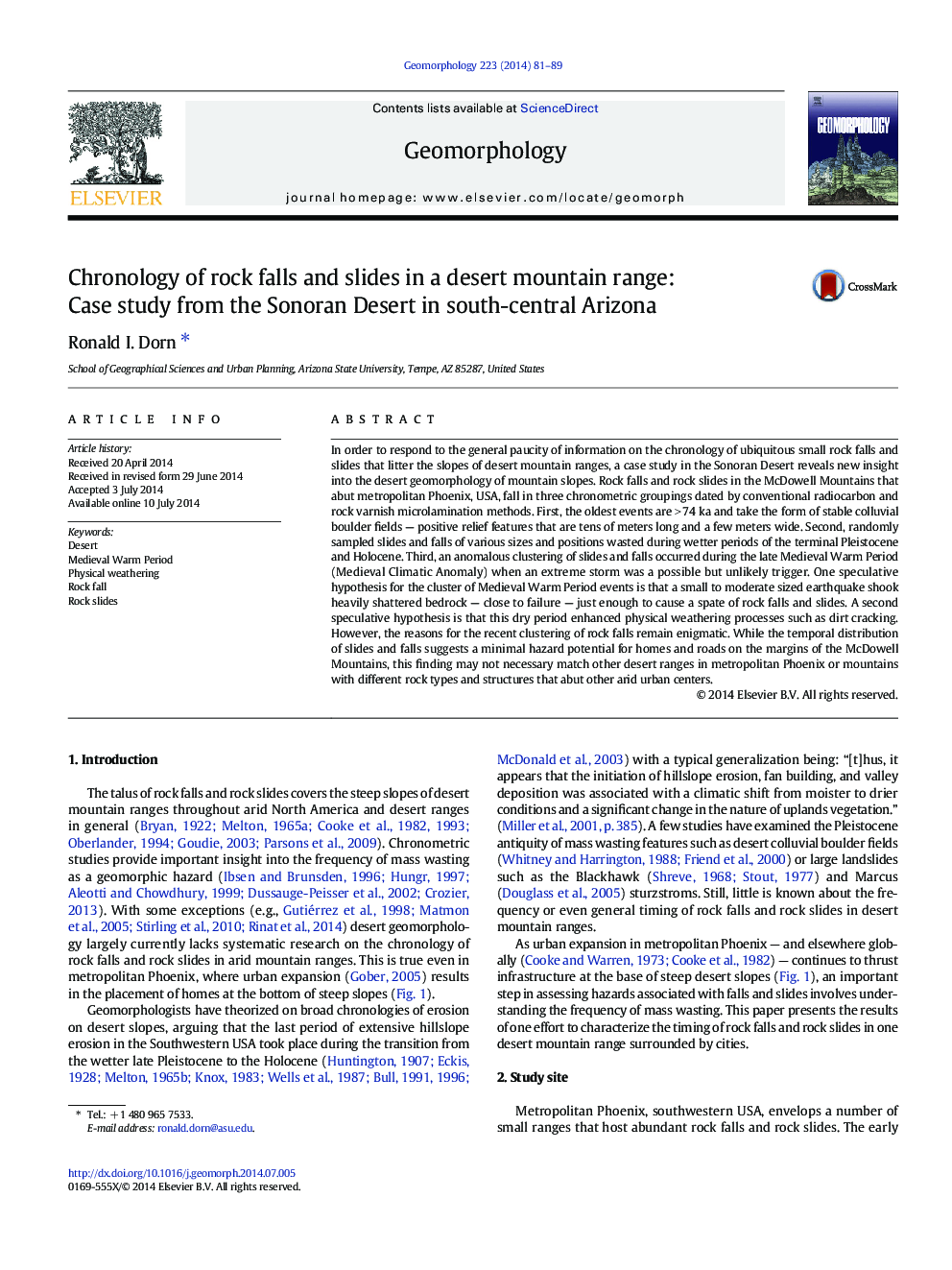| کد مقاله | کد نشریه | سال انتشار | مقاله انگلیسی | نسخه تمام متن |
|---|---|---|---|---|
| 6432388 | 1635426 | 2014 | 9 صفحه PDF | دانلود رایگان |
- Small rock falls and slides litter slopes on desert ranges in the Sonoran Desert.
- The oldest deposits in McDowell Mtns (>Â 74Â ka) form stable colluvial boulder fields.
- Randomly sampled deposits wasted during wetter Pleistocene and Holocene periods.
- A clustering of slides and falls occurred during the Medieval Warm Period.
- This clustering could be from enhanced physical weathering by dirt cracking.
In order to respond to the general paucity of information on the chronology of ubiquitous small rock falls and slides that litter the slopes of desert mountain ranges, a case study in the Sonoran Desert reveals new insight into the desert geomorphology of mountain slopes. Rock falls and rock slides in the McDowell Mountains that abut metropolitan Phoenix, USA, fall in three chronometric groupings dated by conventional radiocarbon and rock varnish microlamination methods. First, the oldest events are >Â 74Â ka and take the form of stable colluvial boulder fields - positive relief features that are tens of meters long and a few meters wide. Second, randomly sampled slides and falls of various sizes and positions wasted during wetter periods of the terminal Pleistocene and Holocene. Third, an anomalous clustering of slides and falls occurred during the late Medieval Warm Period (Medieval Climatic Anomaly) when an extreme storm was a possible but unlikely trigger. One speculative hypothesis for the cluster of Medieval Warm Period events is that a small to moderate sized earthquake shook heavily shattered bedrock - close to failure - just enough to cause a spate of rock falls and slides. A second speculative hypothesis is that this dry period enhanced physical weathering processes such as dirt cracking. However, the reasons for the recent clustering of rock falls remain enigmatic. While the temporal distribution of slides and falls suggests a minimal hazard potential for homes and roads on the margins of the McDowell Mountains, this finding may not necessary match other desert ranges in metropolitan Phoenix or mountains with different rock types and structures that abut other arid urban centers.
Journal: Geomorphology - Volume 223, 15 October 2014, Pages 81-89
